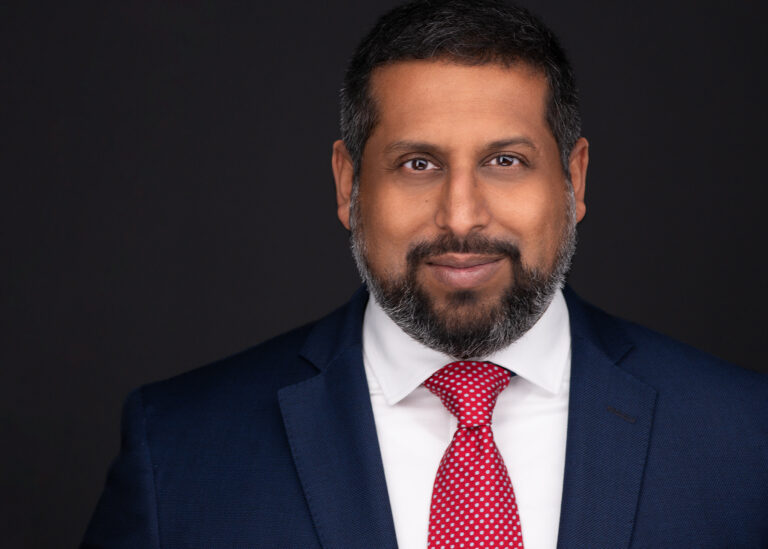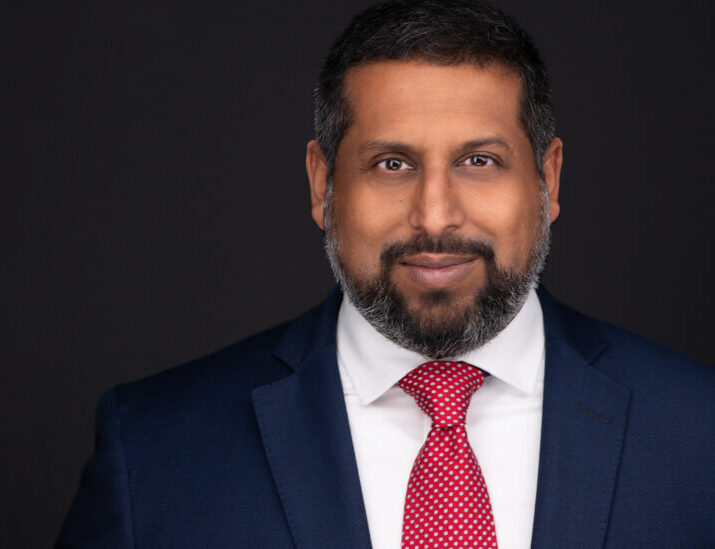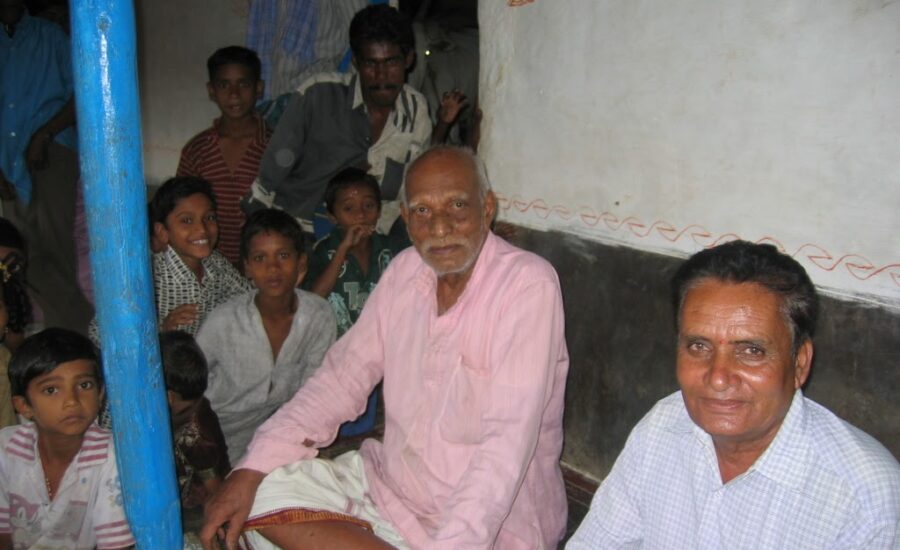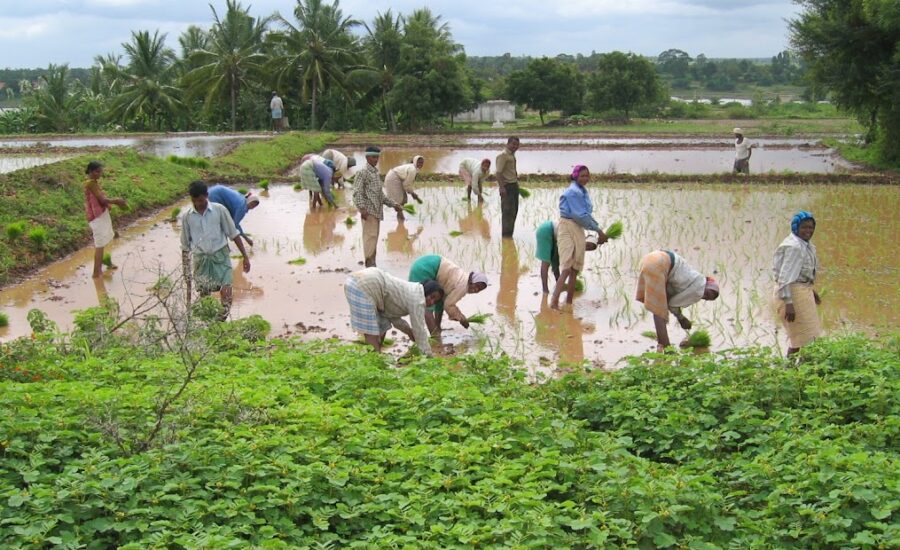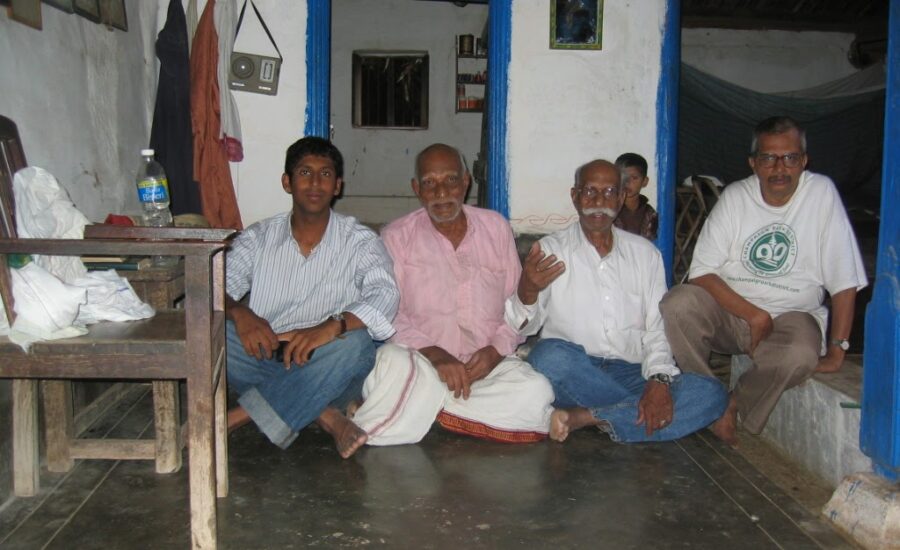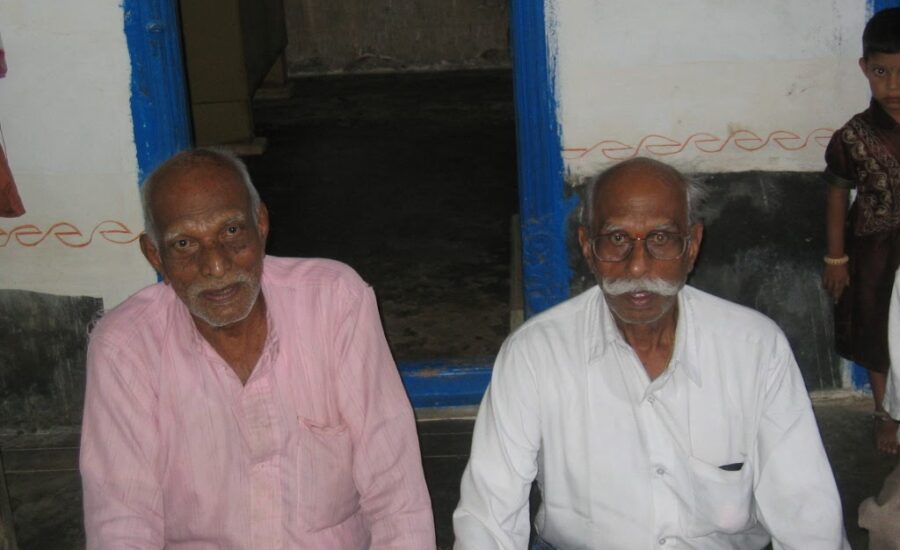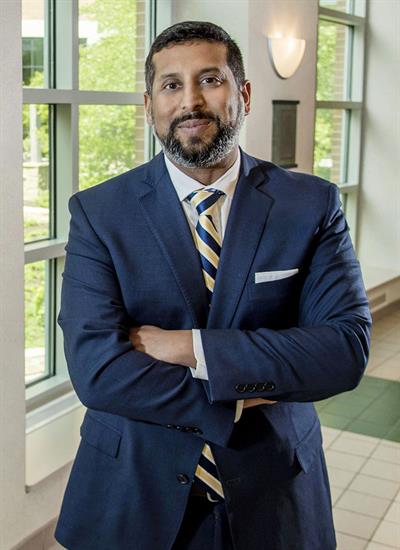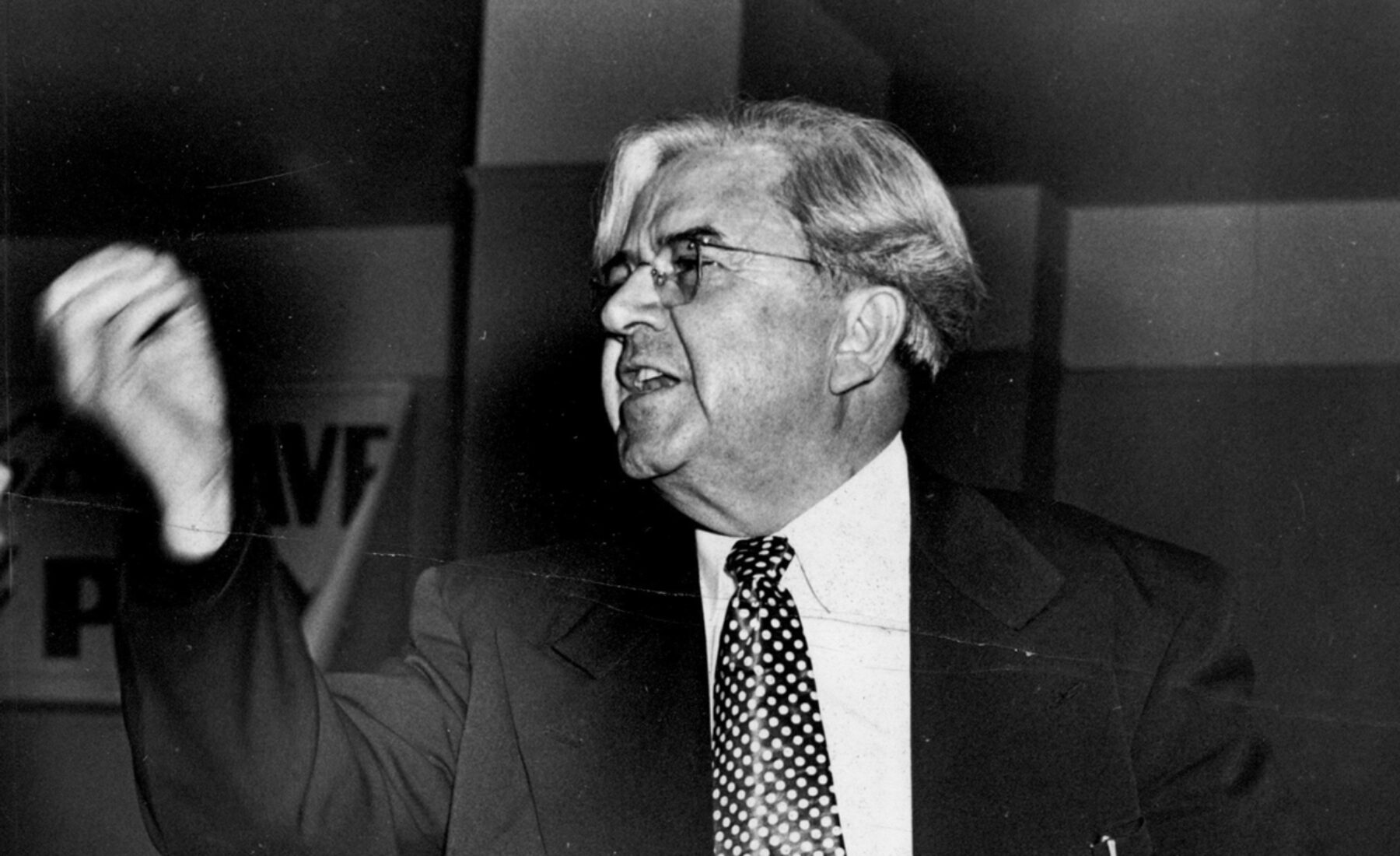The Illinois Storytellers series brings you first-person pieces from distinctive Illinois voices. Vilas Dhar (GRAINGER ’04) is President and Trustee of the Patrick J. McGovern Foundation, a 21st century $1.5B philanthropy advancing artificial intelligence and data solutions to create a thriving, equitable, and sustainable future for all. A leading voice on equity in a tech-enabled world, Vilas champions a new social compact for the digital age that prioritizes individuals and communities in the development of new products, inspires economic and social opportunity, and empowers the most vulnerable. Follow them at @VilasDhar and @PJMFnd.
One of the most important holidays in my grandparents’ rural village in Agrahara, India is Makar Shankranthi, the jubilant festival when families welcome the coming spring and pray for success in the upcoming harvest. During a recent visit, the holiday was just as I remembered from my childhood, with fireworks, music, children playing, families dancing in the street, and fragrant food that’s been made with love.

As one does at a harvest festival, I asked my uncle about the upcoming rice harvest. To my surprise, he pulled out his smartphone. The harvest was looking promising, and he was cautiously optimistic. His confidence, based on information he gleaned from a series of apps the farmers in Agrahara had begun using, was striking. Through these apps, they are able to identify the best days to plant and harvest, to receive projections for the weather, to determine the best market prices, and to coordinate distribution and transportation of the produce.
I was amazed by the transformation that had taken place in just a few short years in Agrahara, a quiet village far from city centers and wholly dependent on agriculture. Technology had significantly lightened his load, freed up his time and allowed him to plan for the future. No longer at the mercy of unpredictable elements, the farmers could prepare for unusually heavy rainfall or drought. My uncle knew when he could take a day off and when everyone needed to be in the fields before dawn for peak harvest time. The arduous task of getting the harvest to market using oxen was eased by a new economy of transportation, all handled on a phone, just like calling an Uber.
These changes gave the community even more reason for celebration and optimism at Makar Shankranthi. In the hands of farmers who hold generations of wisdom about the land and the crops, the technology became a powerful catalyst for opportunity, freedom, and prosperity.
In 2020, I became the first President of the Patrick J. McGovern Foundation, a global philanthropy committed to supporting the best of humanity and ensuring everyone has an equal voice in shaping our shared future. We focus on technology, data science, and AI because we believe, as I witnessed in Agrahara, that these tools can be powerful enablers of a more equitable, sustainable, and thriving future for everyone.
Our work at the Patrick J. McGovern Foundation spans every corner of the globe and some of the most urgent issues of our times, from climate change to gender inequality and the global refugee crisis. We work closely with change-makers on the ground to understand these complex challenges and support their efforts to develop sophisticated technology approaches in response. Again and again, I see amazing results when we widen the circle of participation and decision making around technology.
Our support for vulnerable communities has demonstrated that the future of AI and data-driven solutions need not rest in the hands of the few and privileged pursuing profit. Instead, the Foundation is leading a movement to shift power over the design and implementation of AI and data tools into the hands of communities that are designing and implementing their own technology solutions.
Through the past year, we have worked closely with such organizations to understand how they think about technology within the context of equity and how they approach technology design with a community-centered lens. Several key drivers have emerged from exemplars working at the frontline of indigenous rights, maternal and child health, and refugee resettlement:
Redefine the problem: Before any engineering, coding or analytics ever happen, we first have to interrogate the design principles we use to frame the issues or problems that technology is meant to address. The communities with first-hand knowledge, lived experience, and the cultural context to understand the historical, economic, and social injustices at the root of our most urgent challenges are uniquely positioned to be the drivers of this definition. One of our partners, Digital Democracy, works with Indigenous Earth Defenders who are living and working at the inseparable intersection of Indigenous rights and climate action. Every day they are fighting to defend their territories and their livelihoods, and their work demonstrates that if we are to make progress on climate change, we must honor and protect Indigenous land rights and culture. In an expression of the principle of community-led design, Digital Democracy has been working with a global network of defenders to compile the Earth Defenders Toolkit. This valuable resource gathers together technology created by and for Indigenous communities to facilitate their monitoring, advocacy and action plans, and which places their needs at the center of design processes.
Create values-based technology: Technology should be designed to reflect the values, culture, and aspirations of the communities that will use it. Many refugees want to take care of their own needs and those of their families—they want to be agents of their future. The Self-Reliance Index (SRI) tool, co-created by RefugePoint and the Women’s Refugee Commission, centers refugee voices, allowing refugees to identify where they see opportunities to develop greater self-reliance in their housing, education, health, financial resources, employment, and social capital. In this way, the SRI, which is the first global tool for measuring the progress of refugee households toward self-reliance, catalyzes systemic change in programs, services, and frameworks that align with refugee families’ hopes and values. The SRI tool is available open source in English, Spanish, French, Arabic, and Kiswahili. To date, 21 agencies working in 15 countries have adopted the SRI.
Build on existing technology: Communities can adapt, customize, and advance existing technology from the private sector to be relevant, effective, and beneficial for their context. Around the world, Indigenous languages face extinction and there is enormous opportunity to use technology to preserve these languages. However, standard automatic speech recognition (ASR) and natural language processing is built around primary languages used by large populations – and does not yet exist for most indigenous languages. The International Wakashan AI Consortium is a group of technologists, linguists and native speakers of Indigenous languages who are empowering indigenous people to build advanced Automatic Speech Recognition AI with a Deep Neural Net Model implemented on the machine learning platform Tensor Flow using open source software. The first implementation will be in the Makah language, where there are only 16 Native speakers. Because Makah is closely related to other polysynthetic Indigenous languages, the Wakashan Consortium plans to apply this AI model to other endangered languages. This approach – leveraging best practices in the field and extending their use to overlooked problems – can be a powerful mechanism for delivering social value by advancing what we have already built.
Drive scalable impact: Small organizations can have massive impact at scale when they co-design technology with communities and implement with government partners. For example, Khushi Baby is an organization of 40 that ties tradition with technology to uplift maternal and child health for underserved populations in India. Over the last six years, they have worked to co-create digital health solutions alongside community health workers, reaching 45,000 mothers and infants between Udaipur’s rural villages and Jaipur’s urban slums and supporting 150,000 primary care visits. Their success led the government of Rajasthan – the largest geographic state in India – to invest in and scale their work, which proved critical during the COVID-19 pandemic. By November 2020, 60,000+ community health workers in Rajasthan had supported 14 million beneficiaries through Khushi Baby’s digital platform for COVID-19 screening and follow-up.
Center people, not products: We have all experienced the ways technology can increase efficiency, precision, and connection. It can automate mundane tasks and simplify arduous processes – like transporting hundreds of pounds of produce from a farmer’s field to a city marketplace. Data tools can aggregate information and reflect it back to us for new insights and diagnoses. Yet technological solutions will always fall short of our highest aspirations unless we center its design, implementation, and results on the people whose lives will most be impacted. In my grandfather’s village, technology is providing predictive and analytic services that actually enhance and increase farmers’ capacity to apply their knowledge and ideas for how to improve agricultural productivity. Technology serves to augment and support their work, goals, and ability to make a positive impact.
In the coming years, the Patrick J. McGovern Foundation will be working hand in hand with more communities around the world that are stepping forward to become the architects of their own digital future. Together we will innovate, lift up the voices of communities seldom represented in technology spaces, and share best practices to build a thriving civil society technology sector. As we push to center technology on people, rather than products, we tap into a vast opportunity to amplify the very best of our humanity, creativity, and innovation.
This story was published .